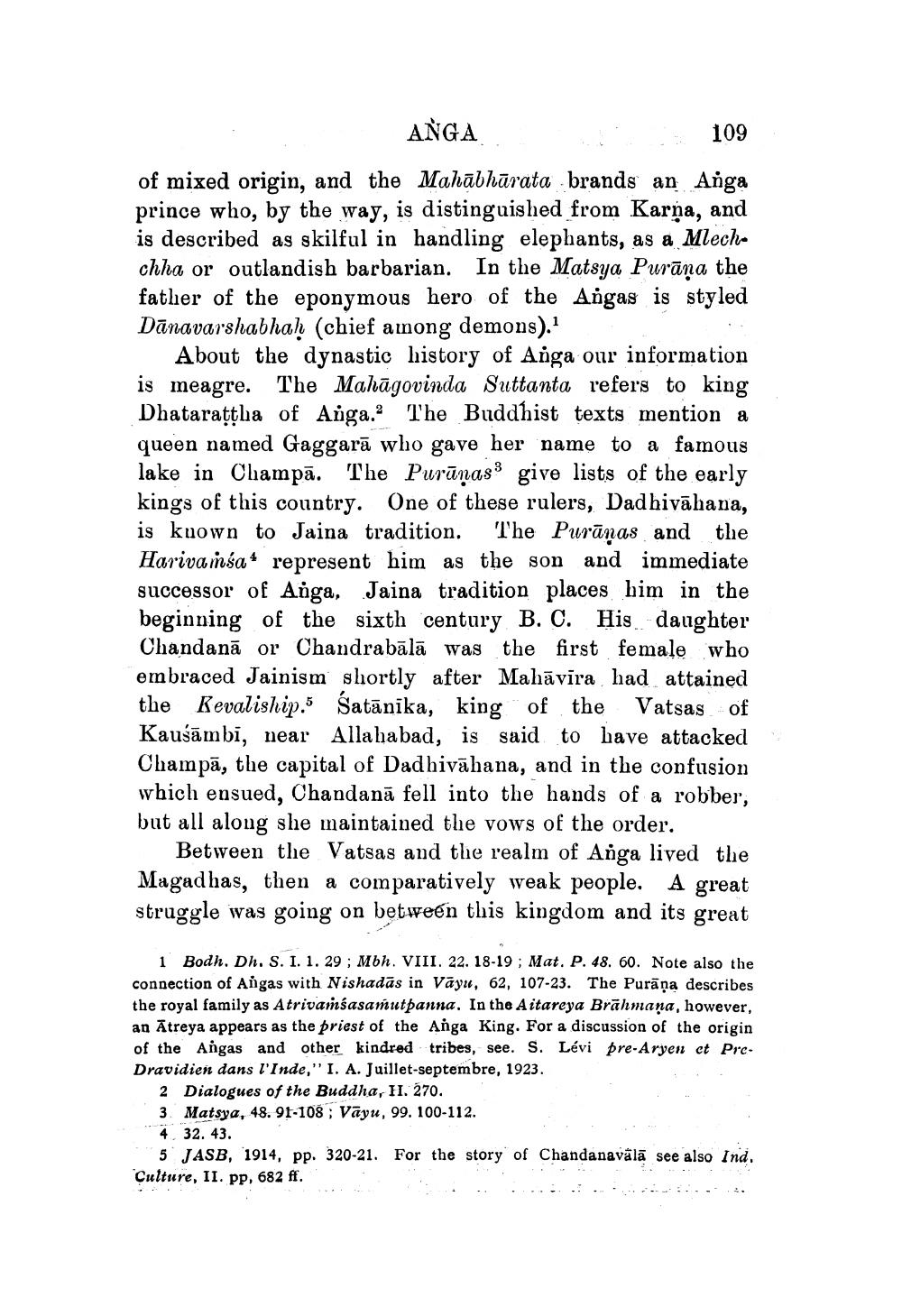________________
ANGA
109
of mixed origin, and the Mahabharata brands an Anga prince who, by the way, is distinguished from Karna, and is described as skilful in handling elephants, as a Mlechchha or outlandish barbarian. In the Matsya Purana the father of the eponymous hero of the Angas is styled Danavarshabhaḥ (chief among demons).1
About the dynastic history of Anga our information is meagre. The Mahagovinda Suttanta refers to king Dhataraṭṭha of Anga. The Buddhist texts mention a queen named Gaggara who gave her name to a famous lake in Champa. The Purūnas3 give lists of the early kings of this country. One of these rulers, Dadhivahana, is known to Jaina tradition. The Puranas and the Harivamsa represent him as the son and immediate successor of Anga, Jaina tradition places him in the beginning of the sixth century B. C. His daughter Chandana or Chandrabālā was the first female who embraced Jainism shortly after Mahāvīra had attained the Kevaliship. Śatānika, king of the Vatsas of Kausāmbi, near Allahabad, is said to have attacked Champa, the capital of Dadhivahana, and in the confusion which ensued, Chandana fell into the hands of a robber, but all along she maintained the vows of the order.
Between the Vatsas and the realm of Anga lived the Magadhas, then a comparatively weak people. A great struggle was going on between this kingdom and its great
1 Bodh. Dh. S. I. 1. 29; Mbh. VIII. 22. 18-19; Mat. P. 48. 60. Note also the connection of Angas with Nishadās in Vayu, 62, 107-23. The Purāņa describes the royal family as Atrivamsasamutpanna. In the Aitareya Brahmana, however, an Atreya appears as the priest of the Anga King. For a discussion of the origin of the Angas and other kindred tribes, see. S. Lévi pre-Aryen et PreDravidien dans l'Inde," I. A. Juillet-septembre, 1923.
2 Dialogues of the Buddha, H. 270.
3 Matsya, 48. 91-108; Vayu, 99. 100-112.
4. 32. 43.
5 JASB, 1914, pp. 320-21. For the story of Chandanavala see also Ind. Culture, II. pp, 682 ff.




